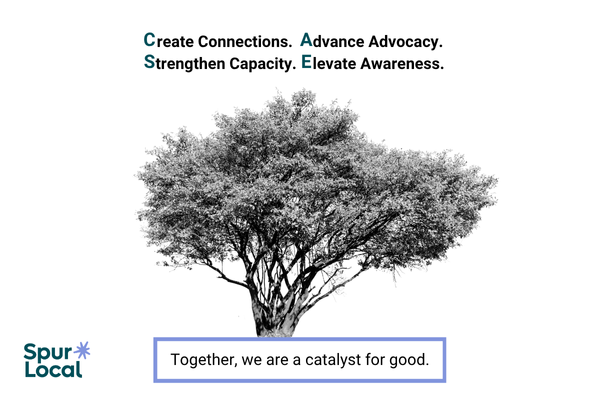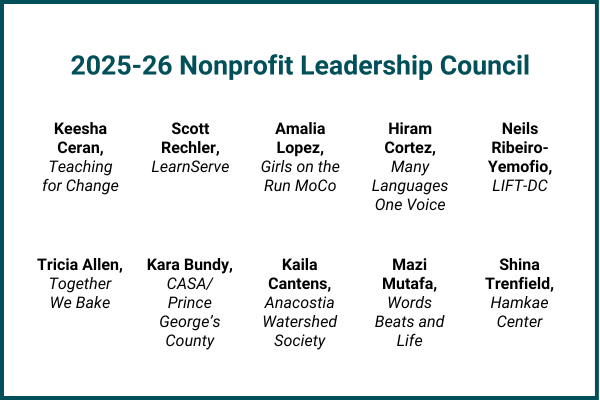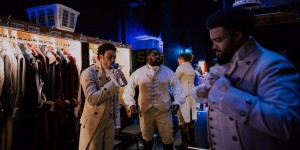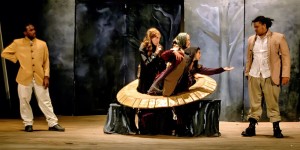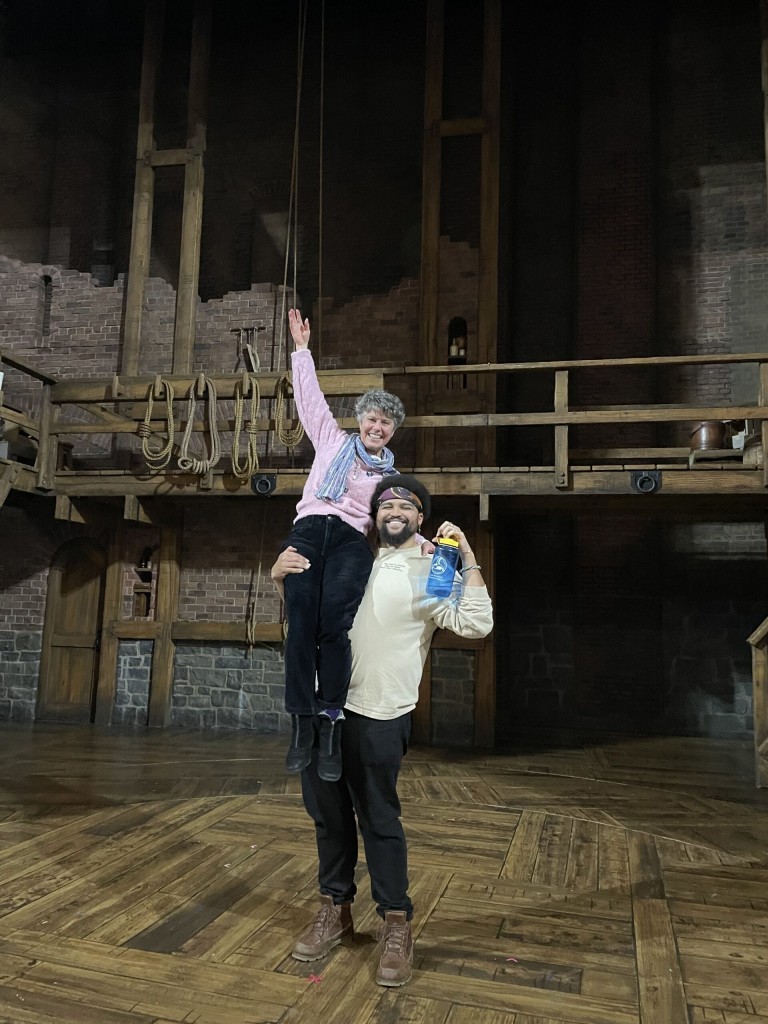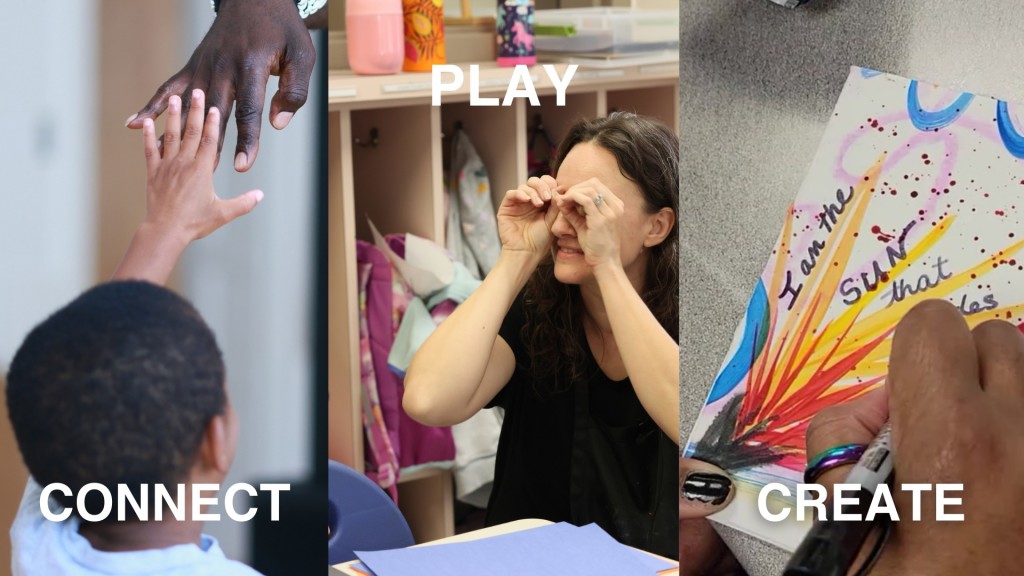A Simple Conversation Can Lead to Something Meaningful
Here’s how Spur Local inspires generosity in the DMV
Originally published by GivingTuesday
Generosity is all around us and shows up in a number of ways.
It’s holding the door for the person behind you, paying for someone’s coffee, or sending a thank-you note to a peer who inspired you. It’s these, at times seemingly simple, everyday acts of kindness that are fueling positive change in America’s capital city, Washington, D.C.
That’s what we’re hearing from local GivingTuesday leader Amanda Liaw, who serves as the Communications and Marketing Director at Spur Local, an organization that spearheads campaigns throughout the year to generate support for local nonprofits. Most recently, Spur Local introduced an all-new day of giving called, Give Greater D.C., that inspired people in the DMV area to give back. The campaign was met with an incredible amount of love resulting in over $300,000 raised to support 154 local nonprofits!
We wanted to know how Amanda and the Spur Local team pulled it off, so we sat down to chat through their strategy. We hope this conversation will spark ideas for your future generosity campaigns like the one you have coming up on Tuesday, December 2. (Hint: that’s GivingTuesday 2025!)
When did you first hear about GivingTuesday and what was your initial reaction?
I first heard about GivingTuesday as a marketing and development associate at a small local nonprofit, one of Spur Local’s nonprofit partners, where I first began working in this sector. I ran its GivingTuesday fundraiser for two years as part of Spur Local’s annual Give Local Together campaign, before joining Spur Local. It was a great way to get creative with our fundraising and reach our audience in new ways. I tested storytelling themes, different visual aesthetics, and more 1:1 methods of engaging with people on social media.
What advice would you give to nonprofit teams who want to plan a GivingTuesday campaign?
GivingTuesday is an opportunity to try one new thing, not everything at once! As a capacity builder, we know that nonprofit advice around campaigns like GivingTuesday can feel overwhelming. When we speak with small nonprofit teams that often plan GivingTuesday campaigns with no budget, a big challenge we see is that there are too many potential strategies and choices.
Our advice: pick one goal, test one new tactic, and see what happens! Based on what you learn, you can continue to build and deepen your campaign in future years.
In addition to your GivingTuesday campaign, “Give Local Together,” you hosted a campaign earlier this spring called, “Give Greater DC.” How did it go?
This was the first Give Greater DC day and it was a resounding success! The campaign raised more than $300,000 for 154 local nonprofits. Many of these were small donations, averaging around $130, from over 1,000 unique donors.
Spur Local created this day to celebrate the strength of our local communities here in Greater Washington during a challenging time for the region. Nonprofits continue to serve residents and advocate for change every day, and it was inspiring to see the amount of love and support that poured back into our nonprofit workers and leaders on this day.
One of my favorite parts of the campaign was seeing donors leave comments with their gifts. One donor wrote to a nonprofit: “Thank you for fighting. Thank you for caring. Thank you for inspiring.”
Any lessons learned from Give Greater DC or Give Local Together?
Tell the everyday stories and meet people where they are.
We have found regional campaigns to be a wonderful vehicle to highlight community members–including nonprofit staff, volunteers, local leaders, and more–who are creating positive change in their workplaces and neighborhoods. People connect with these hyper-local stories that we don’t often hear about.
For one-day campaigns like Give Greater DC or GivingTuesday, we’ve also found it helpful to partner with groups that are already part of people’s daily routines. This can look like partnering with companies to encourage their employees to participate during the work day or partnering with local businesses to display flyers and reach shoppers in their stores.
How does data help your team make decisions and measure success? (Where do you get your data from?)
We send a post-campaign feedback survey to every participating nonprofit and typically get a great response rate of about 30%. After closing our campaign’s donation portal, CauseVox, we also dive into the data by asking questions like:
- How many unique donors gave to the campaign?
- How many nonprofits reached their fundraising goals?
- How much did peer fundraisers raise?
- What was the average donation amount?
- How much was raised before, during, and after the day of the campaign?
And so on! Our team uses feedback from nonprofit partners to improve every future campaign, whether that’s working with CauseVox to develop additional customizations on the campaign site or creating more personalized nonprofit resources in-house.
We also report out trends in the donation data we see, so that nonprofits can make their future decisions based on what other organizations found challenging or successful. For example, nonprofits can use our data to tweak their future fundraising goal amount depending on the average goal amount across all participating organizations. Nonprofits can also explore the average amount raised across organizations of a similar budget size or issue area.
Do you have a favorite success story from Give Greater DC or Give Local Together?
One of my favorite stories is about a relationship that I formed with a local civic group. I initially reached out to them to partner on Give Local Together a few years ago, but we ended up spending the majority of our collaboration on creating group volunteer opportunities with several of our nonprofit partners across the year.
That experience developed a new connection between the civic group and one of our nonprofits, who they now support in a greater way because of how meaningful the volunteer experience was.
I consider this type of ongoing, long-term relationship-building as the greatest success that a campaign can have, even if (or especially if) the collaboration itself extends beyond the campaign.
What’s your go-to way to engage with volunteers and donors ahead of GivingTuesday?
Spur Local provides nonprofits participating in our Give Local Together campaign with ideas and sample toolkits for engaging their audiences ahead of GivingTuesday. The best way to get your volunteers and donors excited is through personal outreach.
Depending on who you’re engaging, this personalization can look different. For some, you can reach out to ask them to share their story of why they give to your organization. For others, you can ask them to join a crew of peer fundraisers to amplify the impact of your organization alongside others.
Ultimately, the go-to strategy depends on your goals, the capacity of your team, and knowing how to meet your volunteers and donors where they are.
We know it’s several months away, but what can we expect for GivingTuesday 2025 on Dec. 2?
Our team is already getting started planning for GivingTuesday 2025! Every year, our Give Local Together campaign usually draws more than 200 nonprofit partners to participate. This year, we will continue to build on our strengths and lessons learned by providing nonprofits with the resources they need to build successful campaign strategies. We’ll also focus on sharing their stories of change on-the-ground and connecting them with people who live in the region.

